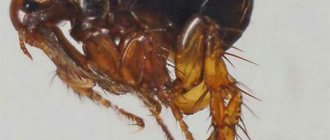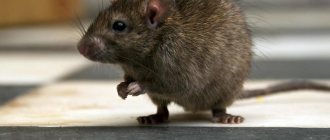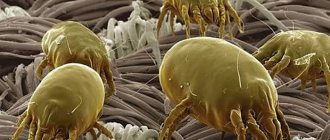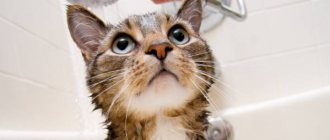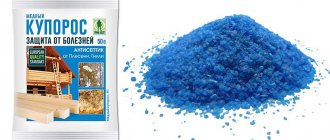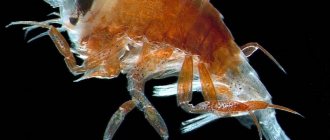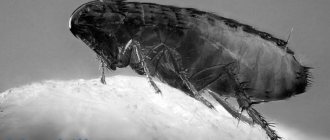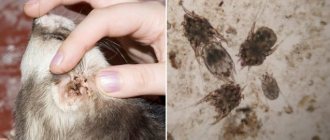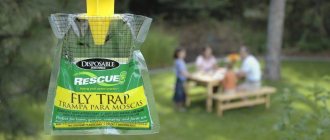Fleas are dangerous to human health as they transmit diseases, including fatal ones. Therefore, the question of how to get rid of bed fleas is relevant. These insects harm not only people, but also animals, causing severe discomfort from bites, serious skin lesions, and allergic reactions.
There are several ways to fight fleas in the bed - by contacting the sanitary and epidemiological service, using traditional methods, or using chemical reagents. The effectiveness of the chosen method depends on how long ago bed parasites appeared in the house and how many there are.
- Determining the presence of bed fleas
- Symptoms and body sensations
- What do their bites look like?
- The most effective ways to get rid of bed fleas
- Chemicals
- Natural helpers
- Additional measures
- Preventive measures for the future
- Bed linen and mattress care
- Consequences
Determining the presence of bed fleas
Most often, fleas appear in a mattress in the warm season - mainly in summer and early autumn. There are several reasons why parasites appear in an apartment. Knowing what linen fleas look like and having determined the presence of this parasite in the house, you should begin to fight it.
What factors influence the appearance of insects:
- Unsanitary conditions in the basement of the house.
- Excessive dampness in the premises.
- Unclean neighbors in a multi-storey building.
Parasites can be picked up by a pet that goes outside for a walk. If you suspect an insect in your apartment, you should determine what bed fleas look like. They move very quickly, which is why they cannot always be immediately distinguished from other types of pests.
Symptoms and body sensations
The presence of parasites in a home can be detected by the presence of bites on the body of a person or animal. It can be difficult to see because it is small in size, but some characteristic symptoms can help you determine if your pet has parasites: They do not have wings.
- They are small in size - from 0.1 to 1 cm, usually 3 mm.
- Long hind legs.
The insects are brown in color and have a round body. They are protected by chitin, which makes it difficult to kill the insect with your finger. Fleas can lay eggs on the fur of animals, as well as in secluded places in the apartment - the larvae look like grains of rice and are white.
What do their bites look like?
Even knowing what bed fleas look like, you cannot always notice the insect itself; more often you can detect bites. To identify the presence of this particular parasite in the house, it is important to know how fleas bite. Residents often mistake skin lesions for mosquito bites, however, bed fleas bite more painfully. If black dots appear on your pets' bedding or in secluded places in your apartment, you can talk about parasites infesting your home.
Features of insect bites:
- Most often they bite through the skin where it is thinner - under the armpits, under the knee, in the abdomen, neck.
- The bite site is itchy.
- Swelling appears.
- The skin around the bite is red.
- The wounds are small.
- You can notice a small line of bites - each of them is at a distance of 2 cm from each other.
The itching and painful sensations themselves do not pose a danger to humans and animals, but parasites are carriers of diseases that can lead to complications and even death.
One of the pathologies that occurs after contact with bed parasites is an allergic reaction. It is undesirable to scratch wounds, as it can introduce infection into the body. Bites from bed fleas should be washed with water and treated with an antiseptic. To help pets get rid of insects, you should take a special collar, drops or other products that are sold in specialized stores.
general information
When people talk about bed bugs, they often mean dog, human, cat or rat fleas. It is difficult to answer the question of what bed fleas look like. The human eye simply cannot discern the characteristics of each insect, so they all appear to be the same. These pests are very small (2-3 mm), wingless, and have a dark or brown body. The main difference between these bloodsuckers is their excellent jumping ability, which makes the individual almost elusive.
Despite the name, all fleas live where it is dark and safe. They can be found under baseboards, in dark corners, carpets, and in animal bedding. They feed exclusively on blood, biting painfully. The victims include pets and people.
These insects mate all year round
If a female individual, ready for fertilization, and a male one meet, and it does not matter whether in a hole, on a bed or on an animal, then they will not pass by each other. After fertilization, the female must drink blood once
This is a necessary condition for the development of eggs in her body. When they mature, the female literally shoots them out from herself over a long distance.
The most effective ways to get rid of bed fleas
When fighting insects, you should not only decide how to treat the bed, but also other surfaces in the house. Bed fleas live not only on a person’s mattress, they settle there to find food. At other times, they can be in any secluded places - cracks in furniture, where there is a lot of dust, heaps of garbage, if there are any in the house, as well as on pets’ bedding.
You can get rid of parasites at home on your own only if the problem has appeared relatively recently and has not become widespread. If there are already a lot of individuals, you will need to use chemical reagents or call a special disinfestation service.
Cat fleas
Read more about the cat flea here.
This type of flea is quite common in the world and can live and feed on many mammals. As a rule, a person begins to bite when there is “no living space left on the cat.”
The list of recommendations is the same as for dogs. Pet hygiene and anti-flea products.
Chemicals
The most popular option for getting rid of insects is the use of chemicals. When carrying out pest control yourself, you should use a special respirator and rubber gloves. Such precautions will help avoid inhalation of harmful substances and skin contact with the chemical.
To combat bed fleas, almost any substance that is designed to exterminate crawling insects is suitable. The most popular is Dichlorvos. But there are other drugs that differ in cost, toxicity, and application features.
What remedies will help you get rid of harmful parasites:
- Delta Zone - active ingredient - Deltamethrin. Allows you to get rid of not only fleas, but also cockroaches, flies, bedbugs, mosquitoes, and ants.
- Xulate Micro - active ingredients of the drug - PPB, Tetramethrin, Cypermethrin. Used in the fight against fleas, bedbugs, cockroaches.
- GET – active substance – Chlorpyrifos. Fights fleas, as well as cockroaches, bedbugs, ants and flies.
- Adamant – active substances – Malathion, Cypermethrin. Allows you to get rid of wingless insects such as fleas, bed bugs, ants.
Treatment with toxic drugs should be carried out in the absence of children and animals. It is better to put food products in the refrigerator or tightly closed cabinet so that the substance does not get on them.
Beds are treated with the selected preparation, especially in joints and crevices. You need to spray the product on the baseboards, cabinets, and clothes. The drug must be distributed, moving towards the exit. You should pay attention to the bathroom during the spraying process, as insects accumulate in damp rooms. The apartment must be left with the windows and doors closed for several hours.
After carrying out the treatment, after some time it is recommended to repeat the procedure - new fleas may hatch from the eggs that were previously laid by insects, then the previously carried out action will not bring results. It is better to postpone cleaning for several days; there is no need to wash the treated walls and floors of chemicals, this way the treatment will be more effective. It is recommended to wash bed linen, pet beds, and mattress covers at high temperatures.
If necessary, you can contact special SES services. They carry out disinfestation using special equipment; after the event, there is less chance that parasites will reappear.
Natural helpers
Folk remedies for insect control without the use of chemicals are relevant if prevention of the appearance of bed fleas is required. When cleaning walls and floors, you can add eucalyptus infusion to the water. Wormwood can be placed in secluded places in the apartment; the smell of the plant repels insects.
Another way to control insects is by freezing. This method is relevant in the cold season. At low temperatures, parasites die. You should consider in advance whether this method can harm communications and surface coatings in the house.
Additional measures
The greatest effect in the fight against bed fleas can be obtained if additional cleaning is carried out some time after treatment. Insects can lay eggs in upholstered furniture and deep-pile carpets - all these surfaces need to be vacuumed.
If you have a pet in the house, you need to treat it for bed fleas. To do this, use special drops, flea shampoo, and a collar - the products are sold at a veterinary pharmacy. It is recommended to wash all items and remove dust and debris from the premises.
Two safe ways to get insects out of your bed
How to get rid of fleas in bed without getting hurt yourself?
Method 1. Temperature treatment of the bed
Bed fleas hate two extremes: frost and heat. If it’s severe winter outside, open the windows in the bedroom and leave it like that for 2-3 hours. Not only the adults, but also the larvae will die out, leaving you to thoroughly vacuum the bed.
High temperatures will also help against fleas. Boil the bed linen and treat the mattress with a steam generator.
The bed body should be thoroughly cleaned of dust and washed with soap.
Method 2. Folk remedies
Bed fleas hate strong plant odors. Throw old bedding in the wash. Treat the mattress with 10 drops of any of the following essential oils:
- Eucalyptus,
- Tea tree,
- Pine,
- Fir,
- Lavender,
- Geranium,
- Mint,
- Anise.
Place dry twigs of wormwood or tansy in the bedroom. Fresh plants can be placed in a vase on the bedside table. Sleep for 2-3 days in another room. After that, go back to the bedroom and vacuum the mattress and under the bed. Do a general wet cleaning.
Please note that treating the bed for fleas alone is not enough. Perhaps some of the adult insects will move to other rooms and hide in carpets and baseboards. Therefore, the next step is to completely remove fleas from the apartment.
Preventive measures for the future
Fleas enter human homes in different ways, however, they often enter through domestic animals, which often walk outside and come into contact with other animals. However, knowing how to treat a bed and how to prevent fleas from appearing on an animal, the problem can be avoided.
What basic measures need to be taken:
- Regularly wear a special flea collar on your pet if it comes into contact with other animals.
- Keep the house clean - regularly remove dust, vacuum, wet clean, clean furniture and other soft surfaces.
- If you suspect the appearance of parasites, start fighting them as early as possible.
Fleas enter homes through attics and basements, where eggs have already been laid and adults have emerged. Then it is necessary to regularly carry out preventive disinfestation.
Bed linen and mattress care
To reduce the risk of parasite reproduction, special attention should be paid to the sleeping area - there is a large accumulation of bed fleas due to the availability of food. It is important to periodically clean the mattress cover, vacuum the bed, and change bed linen regularly.
If disinsection has been carried out previously, all laundry must be washed at high temperatures. There may have been flea excrement, larvae, or dead adults in the laundry. Washing is necessary to prevent bed fleas or allergic reactions.
How to detect linen fleas
Sometimes people confuse bed fleas with other parasites (lice, bedbugs), and mosquitoes are blamed for the bites. You can detect harmful insects in the bed by the following signs.
- Small black dots on bed linen and mattress in the form of commas. This is flea excrement.
- Dark brown color of larvae. Unfortunately, it is almost impossible to notice pest eggs on bedding.
- Visual appearance of an insect. The length of the flea's body is a maximum of 5 millimeters, the color is dark brown or black. The insect jumps with such lightning speed that it creates a feeling of magical disappearance.
Consequences
The least damage caused by insects is red dots, swelling, and discomfort resulting from parasite bites. If the wounds are not treated and combed, there is a risk of infection; the scratched areas may fester.
There is a risk of inflammation of the lymph nodes, allergies, and anaphylactic shock. If negative symptoms appear, it is recommended to consult a doctor. The most serious danger from fleas is that they carry diseases:
- Anthrax.
- Typhus.
- Trypanosomiasis.
- Tularemia.
- Salmonellosis.
- Listeriosis.
- Encephalitis.
- Plague.
To avoid the occurrence of life-threatening infections, it is necessary to carry out sanitary treatment if harmful bed parasites appear in the house.
Knowing how to get rid of bed fleas, you can prevent their reproduction in a short time and protect yourself from existing fleas. Carrying out measures to get rid of insects will avoid negative consequences.
Why are they dangerous?
Blood-sucking synanthropes have been the most undesirable neighbors for humanity since ancient times. But they became the object of study only after their direct connection with outbreaks of epidemics of dangerous diseases was proven. The most terrible thing in their arsenal is the bubonic plague, or black death. Having swept across medieval Europe, it killed almost a third of the population. The killer fleas that launched the deadly relay race arrived on Italian ships along with mice and rats.
Today, populations of ground squirrels, jerboas and gerbils represent the main natural reservoirs of the plague pathogen. The parasitic fleas living on these animals are capable of transmitting a terrible infection to humans. Having become infected from their prey, they retain the ability to spread pathogens for about a year. Flea species in everyday life are practically no different from each other. The person who is bitten can never know what infection he has already received.
Fleas carry many microorganisms that are dangerous to both people and animals. Up to 200 pathogens of dangerous diseases have been identified on various types of fleas. These include:
- helminths that cause parasitic dermatitis;
- tapeworms;
- hepatitis viruses;
- anthrax bacilli;
- tick-borne encephalitis virus;
- typhoid bacteria, etc.
During the biting act, fleas regurgitate the contents of the stomach. In addition to pathogenic bacteria and viruses, this biomass contains a protein to which a person can react with an allergy. It is diagnosed by rashes that fester and itch very much. After scratching, the rash becomes even more extensive. The formations do not heal for a long time. Antihistamines may dull symptoms. But a relapse of the disease is possible. Then you need to consult an infectious disease specialist and an allergist. Especially in the case when areas of severe damage are secondarily infected with pathogenic microflora.
All flea species are intermediate hosts of parasitic nematode worms. They spread eggs of toxocara, roundworms, and pinworms. After biting a person, they enter his body. The resulting larvae spread throughout the human body through the bloodstream, affecting a variety of organs. Toxocariasis is localized in the eyeballs and can grow up to 30 cm. Toxocariasis is quite difficult to treat. The consequences can be irreparable for health.
Diseases
The earth or sand flea causes sarcopsillosis (tungiasis), a rare parasitic disease characteristic of southern latitudes. In this case, she herself acts as a subcutaneous endoparasite. Invading the epidermis, the fertilized female uses a person or animal as an incubator to preserve her own offspring.
Another fairly rare infection these days, but quite likely, is tularemia. It affects small rodents, and it can also occur among domestic animals - sheep, rabbits. This infectious and fatal disease for humans is caused by a virus that is transmitted through biting parasitic insects. The zoonotic virus attacks the lymphatic system, internal organs and eyes. The pathogen is very stable in the external environment and is not afraid of low temperatures. It dies only when disinfected and boiled.
